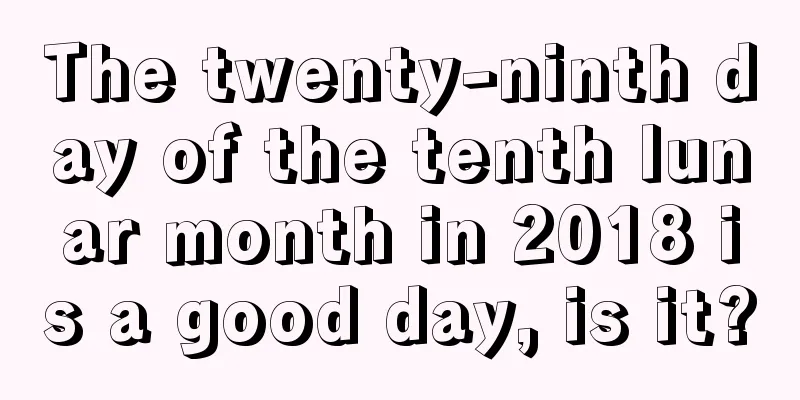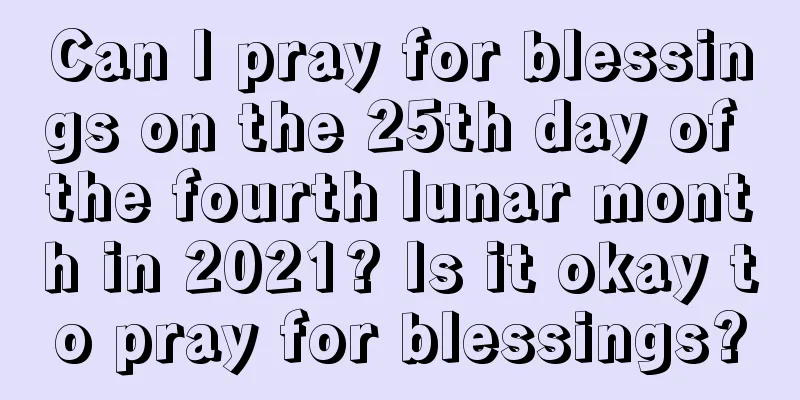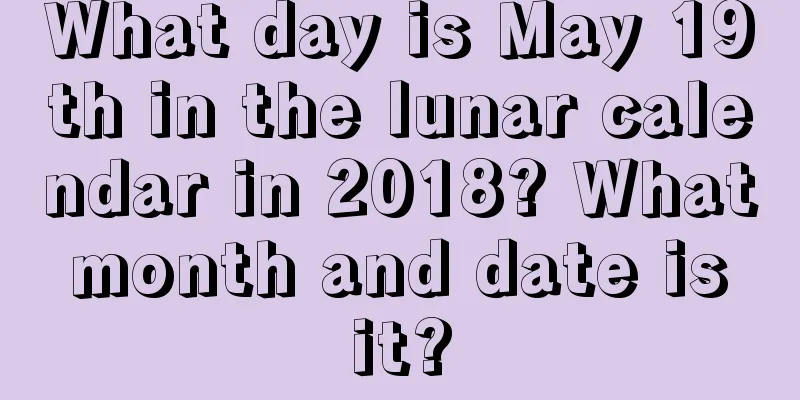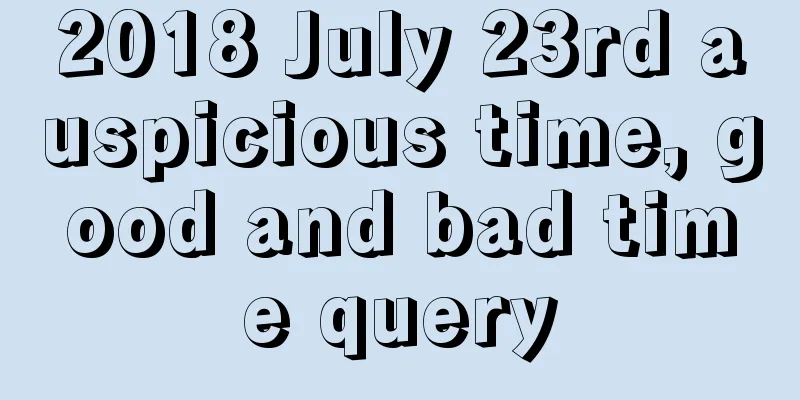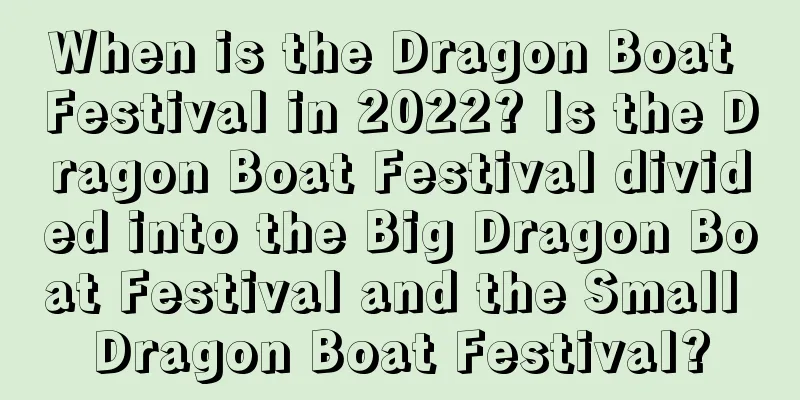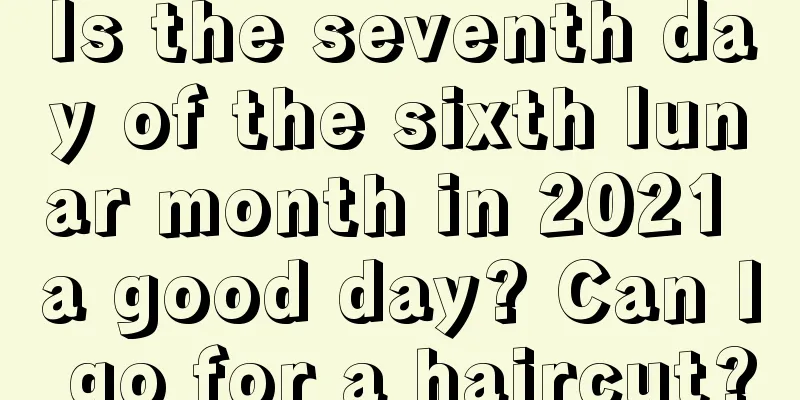How many layers does a compass have? What is the meaning of each layer of the Feng Shui compass?
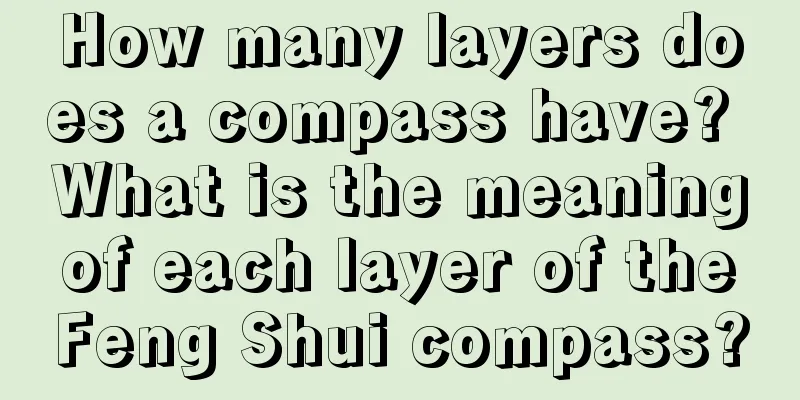
Introduction: Some circles on the compass are simple, while others are complex. There are at least three floors and at most more than forty floors. Each layer has words or symbols, each with a specific meaning. So what does each layer of the Feng Shui compass mean? Next, let’s follow the editor to learn more about it! Mr. Shui Mo has carefully prepared for you a special topic consisting of articles related to the compass. If you want to know more about the articles about the compass, just click in and take a look. The circles on the compass can be simple or complex. There are at least three floors and at most more than forty floors. Each layer has words or symbols, each with a specific meaning.The first layer is Tianchi, which is Tai Chi, or Wei Heaven and Earth.The magnetic needle is in the center, with the red head pointing to the south and the black head pointing to the north.Tai Chi gives birth to all things. One is Tai Chi; two is the two principles (yin and yang, Qian and Kun); three is the three treasures (heaven; earth; man); four is the four images (east, south, west and north); five is the five elements (gold, wood, water, fire and earth); six is the six Jias (jia zi, jia xu, jia shen, jia wu, jia chen and jia yin); seven political affairs (sun, moon and five stars); eight is the eight trigrams (qian, kun, gen, xun, zhen, kan, dui and li); nine is the nine stars (wen, po, lian; lu, ju, wu, bi, tan and fu); ten is the number nine plus one in the Luoshu. Establishing rules, weighing the importance, and forming squares and circles all started with Jinzhen and Tianchi. If the compass does not have the Tianchi, then the north and south directions will be uncertain, yin and yang will be indistinguishable, the Eight Trigrams and Nine Palaces will be indistinguishable, and there will be no way to determine the dragon's direction and qi. When the golden needle moves, it is yang; when it is still, it is yin. Zi and Wu are divided into two images, the two images combined with Mao and You are four images, the four images combined with the four dimensions are eight trigrams, and the eight trigrams determine the directions. Thus, the way of heaven is completed, the way of earth is flat, and the way of man is established. There is a magnetic needle in Tianchi. One end of the needle is pointed and the other end has a corner. The bottom of Tianchi is a straight red line, but one end has two points. Place the magnetic needle on top of the red line, and the end of the magnetic needle with the corner must press on the red line with two points to find the correct direction. This is the basic method of use. The second layer is gossip. It may be the innate Bagua or the acquired Bagua.There are four yin and four yang in the Eight Trigrams, each with its own direction. The directions of the innate Bagua and the acquired Bagua are different. The Postnatal Eight Trigrams are also combined with the Luoshu, and its content is very complex. When looking at the geomancy, a Kan dragon should not be placed in the Chen direction, a Kun dragon should not be placed in the Mao direction, a Zhen dragon should not be placed in the Shen direction, a Xun dragon should not be placed in the You direction, a Gan dragon should not be placed in the Wu direction, a Dui dragon should not be placed in the Si direction, a Gen dragon should not be placed in the Yin direction, and a Li dragon should not be placed in the Hai direction.The lines of the three consecutive Qian hexagrams are in Li, the lines of the missing Dui hexagram are in Xun, the lines of the empty hexagram in the middle of Li are in Zhen, the lines of the Zhen inverted bowl hexagram are in Gen, the lines of the broken hexagram in the lower Xun are in Kun, the lines of the full hexagram in the middle of Kan are in Dui, the lines of the Gen inverted bowl hexagram are in Qian, and the lines of the six broken hexagrams of Kun are in Kan. The third level has nine stars.There are different opinions about the Nine Stars in different dynasties. Some people believe that they are four directions and five stars, while others believe that they are the Big Dipper and two auxiliary stars. The nine stars in Feng Shui are Tan, Ju, Lu, Wen, Lian, Wu, Po, Fu and Bi (dead or warm), which are coordinated with the twenty-four directions and the five elements to form Gen Bing Tan Lang wood, Xun Xin Ju Men earth, Gan Jia Lu Cun earth, Kun Yi Fu Zhou wood, Kan Chen Shen Gui Po Jun gold, Dui Ding Si Bing Wu Wu Qu gold, Li Ren Yin Xu Wen Qu water, Zhen Geng Hai Wei Lian Zhen fire.The Luoshu Nine Star Plate is used to match the Xuankong Flying Star Plate for each period of time, or the Xuankong Dayuan Gua to see which palace is prosperous. For example, in the first period of time, one star is located in the north of Ren, Zi and Gui, so the north is prosperous in the first period of time. The fourth layer of stars.There are 24 celestial stars in total, including Tianhuang, Tianwei, Tiangui, Tianyi, Shaowei, Tianhan, Tianguan, Tianzhan, Tiandi, Nanji, Tianma, Taiwei, Tianping, Taiyi, Taigang, Tianguan, Tianming, Tianyuan, Tianbang, Tianshi, Tianchu, Tianhan, Tianlei and Tianfu. The Heavenly Ghost may be Tiankui, the Tianyuan may be Yangji, the Tianhan may be Yinguang. Tianyi is Tianyi, Tianji is the North Star, Tianhan is the Milky Way, Tianbang and Tianhan are from "Records of the Grand Historian: Book of Celestial Officials".The signs in the sky indicate good and bad luck. They take shape in the sky and on the ground, and are reflected in the twenty-four mountains below. Stars can be good or bad, so there can be good or bad luck. Among all the stars, Ziwei, Shaowei, Tianshi and Taiwei are the four noble celestial stars. Except Shaopo, the other three all have the evidence of establishing a map and building a capital. Whenever the stars shine down on the underground cave, it will be auspicious if gold, wood, water, fire and earth are in harmony; otherwise, it will be inauspicious. It is also known as the Earth Mother's Reversal Plate and the Nine Star Plate. It is mostly used to collect mountains and eliminate sand, but some individual schools also use it to collect and release water. The fifth level of the earth has twenty-four positions.This is the inner disk, also known as the main needle. The twenty-four directions are composed of eight heavenly stems, twelve earthly branches, and Qian, Kun, and Xun. Why did we choose the number twenty-four? The Feng Shui master believes that this is the number of heaven and earth. The number of heaven is twenty-five minus one, and the number of earth is thirty minus six, both are twenty-four. This number corresponds to the twenty-four solar terms in the sky and the twenty-four mountain directions on the earth. The arrangement of the twenty-four directions is: due north Kan hexagram Wang Zigui, northeast Min hexagram Chou Gen Yin, due east Zhen hexagram Jia Mao Yi, southeast Xun hexagram Chen Xun Si, due south Li hexagram Bing Wu Le, southwest Kun hexagram Wei Kun Shen, due west Dui hexagram Geng You Xin, northwest Qian hexagram Xu Gan Hai. The purpose of the twenty-four positions is to determine the direction of mountains and water. When the intraday index points to a certain solar term, the vitality will be present on the corresponding side. The direction pointed by the needle is the magnetic meridian. It reflects the position of the earth, so it is also called the ground.This layer is the Yin and Yang of the Three Yuan and Twenty-Four Mountains. The gold characters on a black background on the compass belong to Yin, while the red characters on a gold background belong to Yang. When looking at the combined lines, Yin and Yang cannot be combined, otherwise you will commit a "Yin and Yang error." The sixth level is the twenty-four solar terms.The twenty-four solar terms begin with Gen in the beginning of spring and end with Chou in the great cold, which are used to deduce the five elements of gold, wood, water, fire and earth, and to observe Shaoyin, Shaoyang, Taiyin and Taiyang.The 72 dragons that penetrate the mountain are used to determine the stems and branches to which the dragon belongs, and then the Yin-Yang and Five Elements of the stems and branches are used to infer the fortune of the dragon. Any dragon that is in the "positive" position will violate the "great void" and should not be used. The seventh level is 72 mountain penetrations.Sixty Jiazi plus eight Gan and four Wei make a total of seventy-two, which are called Chuanshan, corresponding to the seventy-two solar terms. The seventy-two dragons are distributed under the twenty-four positions, with three dragons under each position and six Jias under the twelve branches. To penetrate the mountain is to penetrate the dragon. Only after figuring out which stem and branch the dragon belongs to can we tell good from bad. The so-called Ren Mountain can only be located in the Guihai and Jiazi directions; the Zi Mountain can only be located in the Bingzi and Gengzi directions. The eight stems and four dimensions are in the empty spaces. If the indexes are in these spaces, it will be bad luck.The needle in the human plate is a Sanhe plate, which is formed by the counter-rotating half-palaces of the twenty-four mountains. It is used to see the palaces where the stars around the acupuncture point are located, and then the auspicious mountain is inferred according to the five elements of the palaces and the five elements of the mountain. The eighth level is gold division.Under the twenty-four mountains of the main needle, there are five positions for each mountain, totaling one hundred and twenty, which are used to avoid the lonely and empty tortoise shells, and are called dividing gold.Sixty equally divided dragons, also known as sixty earth-penetrating dragons, are used to deduce whether the dragon's energy is yang or yin, or to see whether its degrees are pure. The ninth layer has twenty-four people in the middle plate, also known as the middle needle plate.The Feng Shui master believes that heaven and earth came first, and then humans, so the human plate is located in the middle of the heaven and earth plates, and Zi and Wu are aligned between Ren Zi and Bing Wu in the inner plate. It is half a grid to the right of the twenty-four mountain directions and belongs to the North Pole meridian. Feng Shui masters call it the upper limit of the celestial stars, which determines the advance and retreat of fortune, and the lower limit of the mountains and rivers, which determines the fate of the land veins.The sky plate sewing needle is a three-in-one plate, which is formed by the clockwise half-palaces of the twenty-four mountains. You can see which palace the water is in, or you should refer to this layer when releasing water. For example, if you want to release water in the Gen Palace, you should release the water in the Gen Palace of this layer, instead of looking at the Gen plate of the ground plate. The tenth floor: 120 dragons divide the goldThe one hundred and twenty dragon divisions divide the twenty-four mountains into five degrees each, becoming one hundred and twenty stems and branches, and each stem and branch is assigned to the same group of earthly branches, for a total of forty-eight groups.The eleventh level: Sixty DragonsThe Feng Shui master believes that: the air flows out from the orifice, just like blowing dust through a tube. The five elements flow across the earth, giving rise to all things. When the land has auspicious energy, the soil will rise accordingly. Qi penetrates the earth. If the Qi is strong, the earth will become high; if the Qi is weak, the earth will become flat; if the Qi is clear, the earth will become transparent and beautiful; if the Qi is turbid, the earth will become dark. Then came evil. When fiddling with the dial, there are different interpretations of the sixty dragons. If Jiazi is revealed and hits the mountain, the girl will be mute and the boy will suffer from tuberculosis; if Bingzi is revealed, the boy will be rich and noble, etc.The star plate is formed by the changes of the hexagrams and lines of the heaven and earth hexagrams. Its principle is to change according to the specified rules of the Yi Gua, and the star is mostly used to match the hexagram and fortune. The Tanlang star belongs to the first fortune hexagram, the Ju Men star belongs to the second fortune hexagram, the Lu Cun star belongs to the third fortune hexagram, the Wen Qu star belongs to the fourth fortune hexagram, the Wu Qu star belongs to the sixth fortune hexagram, the Po Jun star belongs to the seventh fortune hexagram, the Zuo Fu star belongs to the eighth fortune hexagram, and the You Bi star belongs to the ninth fortune hexagram. The twelfth level of mantra.Combined with the sixty dragons that penetrate the earth, it is used to interpret good and bad luck, such as "Jia Zi, Qi, Ren and San Hai are for minor mistakes. Jia Zi clashes with the mountain, causing yellow swelling, madness, mute women and tuberculosis men. If there is mud in the coffin in the upper water, there will be verbal disputes and legal disputes in the years of Si, You and Chou."There are two plates of sixty-four hexagrams. This layer is the inner plate, which records the names of the sixty-four hexagrams. All the star hexagram fortunes, five elements hexagram qi, star names, etc., come from the sixty-four hexagrams. Thirteenth level, twelfth time.Zhe divided the celestial sphere into twelve parts in order to observe the movement of the sun, moon, and five planets as well as the solar terms. The twelve times are roughly determined according to the constellations, and their names are Shouxing, Dahuo, Ximu, Xingji, Xuanxiao, {Nüqu} Zi, Jianglou, Daliang, Shichen, Queshou and Que, the fourteenth layer of the twelve divisions. Ancient philosophers coordinated celestial phenomena with certain places on the ground, which is the concept of division of the sky. Feng Shui master believes that if you are good at guessing directions, you can get good luck.This plate contains the names of the sixty-four Yi Gua. Wuji gives birth to Taiji, Taiji gives birth to Liangyi, Liangyi gives birth to Sixiang, Sixiang gives birth to Bagua, and then the eight trigrams give birth to the sixty-four hexagrams. Each Yi Gua has a name, and this is the layer. The names of the sixty-four hexagrams on the fourteenth layer of the celestial plate are:The sixty-four hexagrams are matched with different numbers: one, two, three, four, six, seven, eight, and nine. These numbers are the five elements of the sixty-four hexagrams. The numbers one and six belong to water, two and seven belong to fire, three and eight belong to wood, and four and nine belong to gold. Then, they are combined with the use of the yin and yang houses to observe their changes in generation and restraint.The fifteenth layer of outer disk stitches.The outer plate Pan Ziwu is between the inner plate (correct needle) Zi Gui and Wu Ding, so it is called sewing needle. Some Feng Shui masters advocate the use of sewing needles, believing that sewing needles are more accurate than regular needles, and can eliminate incoming water and determine the direction of prosperity and decline. The needle points to the shadow of the table at noon. Since the north-south direction it measures is the light and shadow of the sun, it is also called Tianpan 1.The Aixing Guayun records the fortune of the sixty-four Yi Gua, and then uses it in conjunction with the Yuanyun. For example, during the first fortune period, the first fortune hexagram is the prosperous hexagram, and the ninth fortune hexagram is the declining hexagram. Another example is that during the ninth fortune period, the ninth fortune hexagram is the prosperous hexagram, and the first fortune hexagram is the declining hexagram. It is auspicious to open the door with a prosperous hexagram, and an ominous sign with a declining hexagram. The fifteenth layerB is the plate of the first and upper lines of the sixty-four hexagrams: This layer is the position of the first and upper lines of the three hundred and eighty-four lines of the sixty-four hexagrams. "刀" represents the "first line" and "上" represents the "upper line". The arrangement of the line gods starts with the first line, followed by the second line, the third line, the fourth line, the fifth line, and the upper line. Although only the first and upper lines are recorded on the plate, the second line in between follows the first line, and the third line follows the second line... The auspicious degrees of the sixteenth layer of the celestial plate, sixty-four hexagrams and three hundred and eighty-four lines:This level matches the three outer lines with the three inner lines after the changes of the Yi Gua. If the combination is 16, 27, 38, 49 in the River Chart or 19, 28, 37, 46 in the Luo Shu, then it is an auspicious degree. The red dots represent these auspicious degrees.17th floorThis level of the sixty-four hexagrams and the six relatives' lines is to match the six lines of the sixty-four hexagrams, and each line is matched with the six relatives' lines. The six relatives are divided into officials and ghosts, parents, brothers, wives and wealth, and children and grandchildren. The six relatives' lines are used to divide the gold.The 18th level, 28 constellations:The twenty-eight constellations are the twenty-eight star constellations north and south of the ecliptic, and these twenty-eight constellations all belong to the seven planets and four remainders, which are the sun, moon, gold, wood, water, fire, earth, as well as the blue dragon, red bird, white tiger and black tortoise.The nineteenth level contains the twenty-eight constellations.Ancient philosophers used the twenty-eight constellations as the basis for measuring the sky. The twenty-eight constellations are Jiao, Kang, Shi, Fang, Wei, Ji; Dou, Niu, Nu, Xu, Wei, Shi, Bi; Kui, Lou, Wei, Ang, Bi, Zi, Shen; Jing, Gui, Liu, Xing, Zhang, Yi, Zhen. They are distributed on the compass at a certain degree, with a total circumference of 365 degrees.This layer is the Yao degree of the twenty-eight constellationsFor reference when setting the direction, one must look at the relationship between the Yao degree and the twenty-eight constellations, and then calculate the good and bad luck of each degree.Summary: The above is the meaning of each layer in the compass. You can refer to the above content. I hope this article can help you! |
>>: Detailed explanation of the use and precautions of Feng Shui compass
Recommend
What are the auspicious days for starting renovations in August of the lunar calendar in 2018?
Introduction: In traditional Chinese culture, big ...
When will the baby be born if you get pregnant during the Spring Festival in 2019? Is it good to have a baby in the New Year?
The Spring Festival has a long history and is also...
Can I get a haircut during the summer solstice? What are the customs for bringing good luck during the summer solstice?
We have always had a saying that we should not sha...
Query the location of the God of Wealth on the 24th day of the first lunar month in 2018
1. What day is the 24th day of the first lunar mo...
How is the fortune of a woman born in the twelfth month of the lunar calendar? Is she destined to bring good luck to her husband?
People born in different months have different des...
What is the date of September 25th in the lunar calendar in 2017? Is it an auspicious day?
Introduction: In traditional Chinese customs, peop...
Do people born on the 15th day of the seventh lunar month during the Ghost Festival have good fortunes? Are people born on the Ghost Festival born on heavenly days?
In folk culture, the 15th day of the seventh lunar...
Is it a good idea to get married in December 2022? Which day is best to get married in the twelfth lunar month?
The twelfth month of the lunar calendar is the las...
What are the do's and don'ts on the 20th day of the twelfth lunar month in 2017?
The Fortune Teller website has prepared a large a...
What are the auspicious days for haircuts in June of the lunar calendar in 2018?
Introduction: In the hot summer, a haircut can mak...
List of the lucky god's directions on May 28, 2020
An overview of the directions of the God of Happi...
Is February 13th of the lunar calendar in 2017 an auspicious day for moving? Can I move?
Introduction: Moving is a big event for every fami...
Is it possible to travel on Monday, the 24th day of the leap April, 2020? Is the hexagram a good omen?
The daily almanac includes: dates, taboos, luck an...
What gift should I choose for Chinese Valentine’s Day? How to write a gift card for Chinese Valentine’s Day?
The seventh day of July is Chinese Valentine's...
Is it a good idea to pray on the 20th day of the eighth lunar month in 2019? What is the hexagram?
Is it a good idea to pray on the 20th day of the e...
